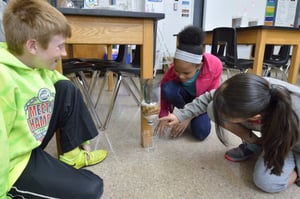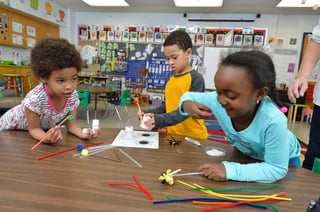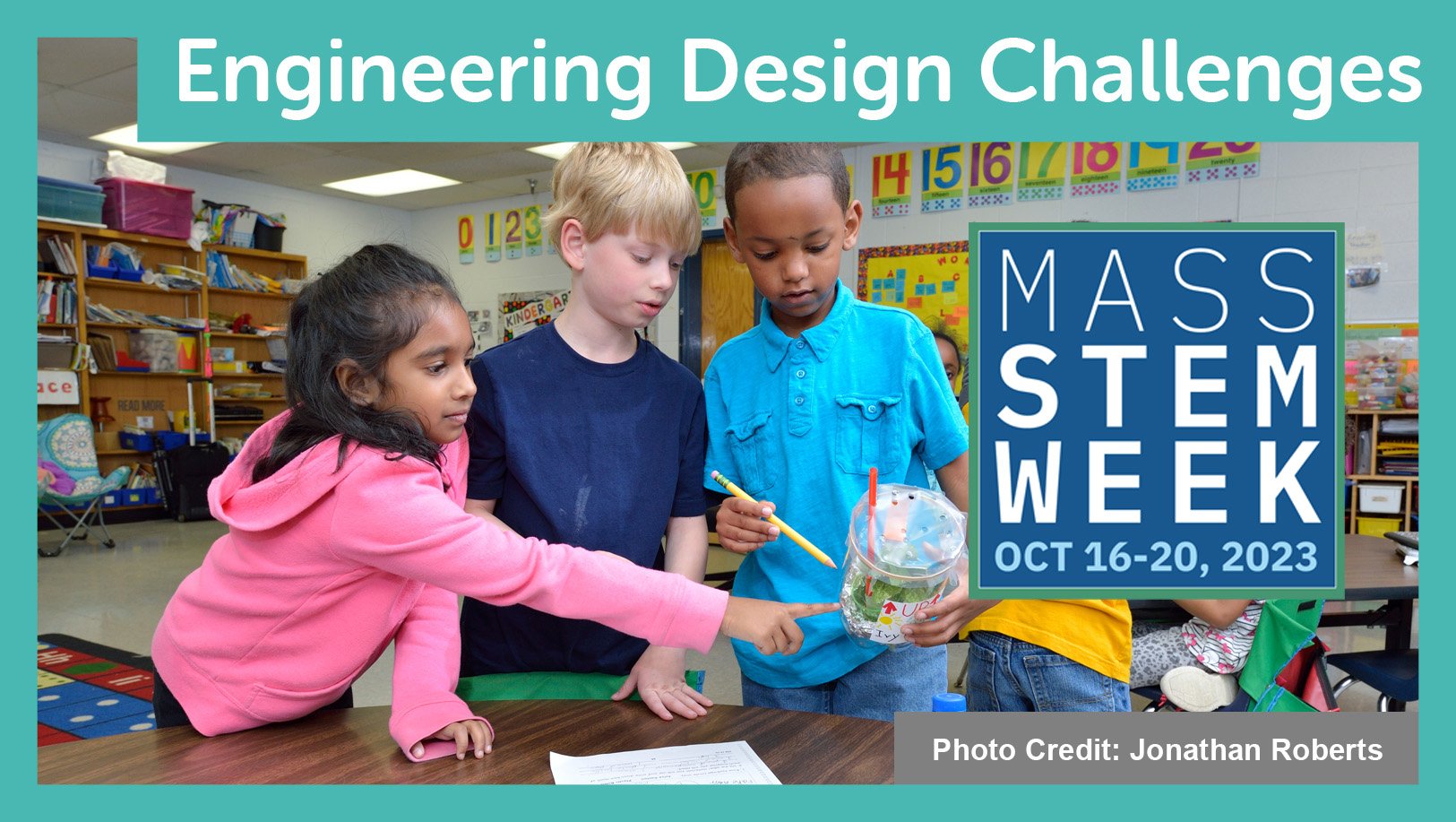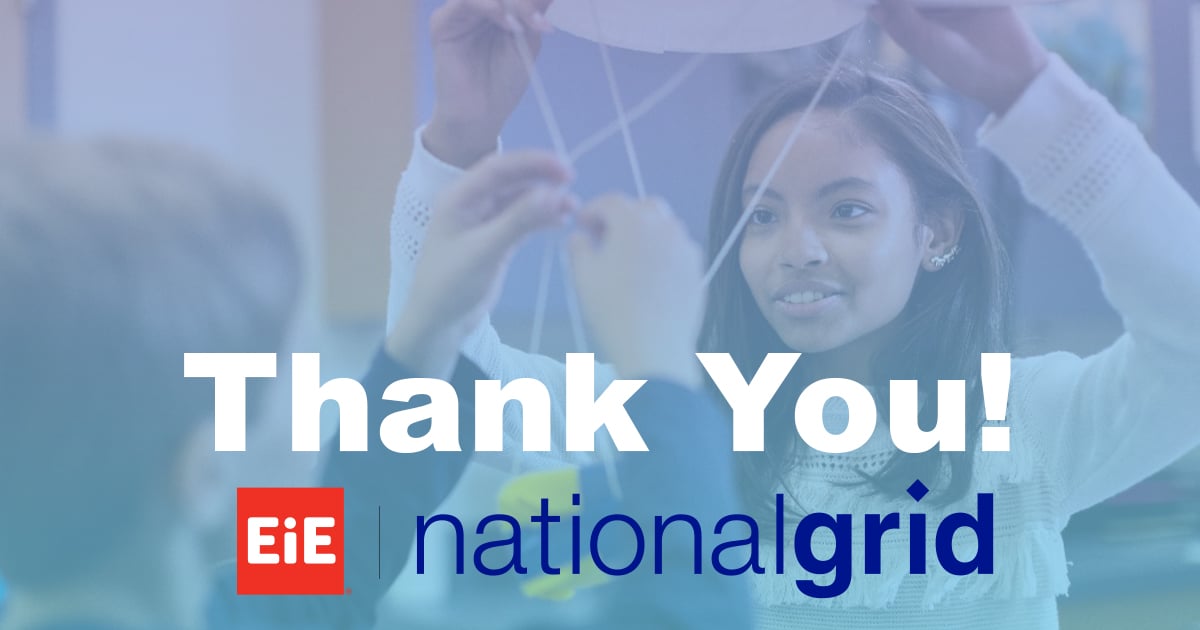 One of EiE’s design principles is to set all of our units in a real-world context to give students an idea of what engineers really do. Because of this, we’re constantly finding connections to our units in the news and in viral videos. But nothing makes us happier than hearing about EiE educators who make local and global connections in their own classrooms! We’re always blown away by the creative ways that educators inspire their students, and today we wanted to share some of their stories with you.
One of EiE’s design principles is to set all of our units in a real-world context to give students an idea of what engineers really do. Because of this, we’re constantly finding connections to our units in the news and in viral videos. But nothing makes us happier than hearing about EiE educators who make local and global connections in their own classrooms! We’re always blown away by the creative ways that educators inspire their students, and today we wanted to share some of their stories with you.
Designing for Change
![IMG_20160721_092942750[1].jpg](https://blog.eie.org/hs-fs/hubfs/Blog_Images/IMG_20160721_092942750%5B1%5D.jpg?width=320&name=IMG_20160721_092942750%5B1%5D.jpg) When Dr. Gina Navoa Svarovsky, faculty at the Center for STEM Education and the College of Engineering at the University of Note Dame, attended an EiE Teacher Educator Institute, she wondered how she could adapt EiE for the middle school science and math teachers in her STEM Integration PD workshops. Because of Notre Dame’s proximity to Michigan, she has been closely following the water crisis in Flint. She thought of EiE’s environmental engineering unit, Water, Water Everywhere, and realized that she could make the lessons connect with middle schoolers by bringing in a “direct, real-world connection”: she envisioned students designing point-of-entry filters to attach to people’s homes in Flint. She even reached out to the Flint study team to get real water contamination data. The result is a powerful design challenge: students are tasked with designing and recommending the best point-of-service water filter for Flint residents’ homes, based on what they learned about the water contamination levels. Gina was kind enough to provide us with an overview of her PD workshop that might provide a starting point to help you incorporate this real-world connection into your own classroom. You can check out a PDF here.
When Dr. Gina Navoa Svarovsky, faculty at the Center for STEM Education and the College of Engineering at the University of Note Dame, attended an EiE Teacher Educator Institute, she wondered how she could adapt EiE for the middle school science and math teachers in her STEM Integration PD workshops. Because of Notre Dame’s proximity to Michigan, she has been closely following the water crisis in Flint. She thought of EiE’s environmental engineering unit, Water, Water Everywhere, and realized that she could make the lessons connect with middle schoolers by bringing in a “direct, real-world connection”: she envisioned students designing point-of-entry filters to attach to people’s homes in Flint. She even reached out to the Flint study team to get real water contamination data. The result is a powerful design challenge: students are tasked with designing and recommending the best point-of-service water filter for Flint residents’ homes, based on what they learned about the water contamination levels. Gina was kind enough to provide us with an overview of her PD workshop that might provide a starting point to help you incorporate this real-world connection into your own classroom. You can check out a PDF here.
Bee-lieve It or Not
 Kathryn Kilyk; STEM Lab educator at Conover Road Primary School in Colts Neck, New Jersey; created a buzz in her classroom when she taught EiE’s agricultural engineering unit, The Best of Bugs: Designing Hand Pollinators. She wanted to help her young engineers understand how pesticides factored into their own lives, so she opened up a dialogue by asking students why they thought that pesticide signs around their town contained warnings for animals and children. They discussed how pesticides can target more than just harmful bugs: they affect people, pets, and helpful pollinating bugs, as well. Then they dove deep into YouTube videos about everything from robo-bees to a #BeeFriendlier marketing campaign kids had seen on their cereal boxes! Kathryn says her kids loved the real-world connections, and the in-depth research got them thinking about “keeping [their] own corner of the planet welcoming and ripe for pollinators, namely bees.” We think there couldn’t bee a better outcome than that!
Kathryn Kilyk; STEM Lab educator at Conover Road Primary School in Colts Neck, New Jersey; created a buzz in her classroom when she taught EiE’s agricultural engineering unit, The Best of Bugs: Designing Hand Pollinators. She wanted to help her young engineers understand how pesticides factored into their own lives, so she opened up a dialogue by asking students why they thought that pesticide signs around their town contained warnings for animals and children. They discussed how pesticides can target more than just harmful bugs: they affect people, pets, and helpful pollinating bugs, as well. Then they dove deep into YouTube videos about everything from robo-bees to a #BeeFriendlier marketing campaign kids had seen on their cereal boxes! Kathryn says her kids loved the real-world connections, and the in-depth research got them thinking about “keeping [their] own corner of the planet welcoming and ripe for pollinators, namely bees.” We think there couldn’t bee a better outcome than that!
Outstanding Outreach
 At Brookfield Elementary School in Chantilly, Virginia, Advanced Academic Resource teacher Sheri Reed is passionate about bringing problem-based learning into her classroom through real-world connections. When she taught our Engineering Everywhere unit Go Fish: Engineering Prosthetic Tails, she decided to put a twist on our guiding question: in her class, youth were asked how they could design a prosthetic for an animal or a human. Her class read articles about athletes who used prosthetics, and she reached out to the Hanger Clinic for Prosthetics & Orthotics in Reston, VA. She was delighted to find that they had an outreach program, and they sent a Licensed & Certified Prosthetist/Orthotist who brought prosthetic legs, fingers, hands, and infant helmets into Sheri’s classroom. If that wasn’t enough, she took our context-setting video featuring Derby the Dog and his prosthetic legs to the next level by asking the local vet clinic to bring “Champ the Tri-Pod,” an adorable three-legged dog (pictured above), for a very special classroom visit! Sheri’s hard work and creative outreach paid off in the design challenge. She says:
At Brookfield Elementary School in Chantilly, Virginia, Advanced Academic Resource teacher Sheri Reed is passionate about bringing problem-based learning into her classroom through real-world connections. When she taught our Engineering Everywhere unit Go Fish: Engineering Prosthetic Tails, she decided to put a twist on our guiding question: in her class, youth were asked how they could design a prosthetic for an animal or a human. Her class read articles about athletes who used prosthetics, and she reached out to the Hanger Clinic for Prosthetics & Orthotics in Reston, VA. She was delighted to find that they had an outreach program, and they sent a Licensed & Certified Prosthetist/Orthotist who brought prosthetic legs, fingers, hands, and infant helmets into Sheri’s classroom. If that wasn’t enough, she took our context-setting video featuring Derby the Dog and his prosthetic legs to the next level by asking the local vet clinic to bring “Champ the Tri-Pod,” an adorable three-legged dog (pictured above), for a very special classroom visit! Sheri’s hard work and creative outreach paid off in the design challenge. She says:
Being able to feel and manipulate “the real thing” really brought to life what it’s like to have to wear a prosthetic and I was amazed when the students came back to what they had learned through the EiE investigations . . . the prosthetic needed to function, be comfortable, attach easily, and be durable. Their final projects are now ranging from robotic hands and arms to a dolphin’s tail.








